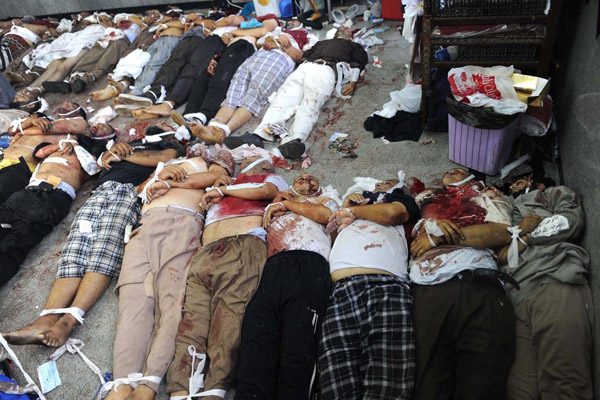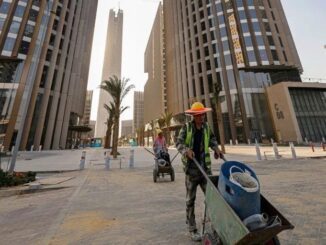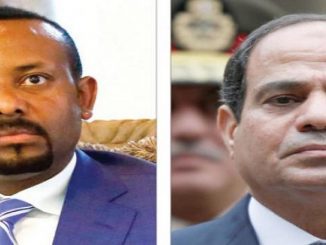
Three years on from the dramatic dispersal of the sit-in in Rabaa al-Adawiya Square by Egyptian army and security forces, memories of the day remain as harrowing as ever for those who witnessed the events, especially the doctors working in Rabaa Field Hospital.
On August 14, 2013, protesters’ encampments in the square and by the hospital were bulldozed and more than a thousand protesters killed in a space of ten hours, said Al-Jazeera in a report on Wednesday with a video including testimonies of eye witnesses.
This wasn’t merely a case of excessive force or poor training. It was a violent crackdown planned at the highest levels of the Egyptian government. Many of the same officials are still in power in Egypt, and have a lot to answer for.
Human Rights Watch has said it was “one of the largest killings of demonstrators in a single day in recent history” and that it was “a violent crackdown planned at the highest levels of the Egyptian government”. The Special Forces carried out the attack in Rabaa al-Adawiya Square with armored personnel carriers, bulldozers, ground troops and snipers.
The security forces have always maintained that some of the demonstrators were armed and that there were so-called “terrorists” among their numbers, which was never documented by authorities, and always denied by protesters . Human Rights Watch observer Omar Shakir says that their research team was there “when security forces fired on the Rabaa hospital, then overtook the building, ordered medical personnel, families, and the injured out of the hospital, and that structure was later set ablaze”.
Despite a wealth of compelling evidence implicating the Egyptian army and security forces in killing protesters, no one has ever been brought to trial and the Egyptian government is yet openly to investigate the incident. The Egyptian National Council of Human Rights did produce a report on the events but its findings are at odds with both Human Rights Watch and the witnesses in this film.
Dr Hanan al-Amin, one of the doctors on call that day, struggled for hours attempting to treat the hundreds of injured – but at 4 pm she was standing among increasing numbers of bodies. As she treated three patients simultaneously, an officer instructed her to leave the hospital. When she protested, he shot them all dead and told her she was next if she did not obey his orders to evacuate. Moments later, the field hospital, mosque and first floor of the field hospital were set on fire.
This film examines these events through the eyes of the survivors, medical staff and journalists present the whole time. It combines personal testimony with diary extracts, photographs and archive to tell the story of “dispersal” in which more than 1,100 were killed, 10,000 injured and 21,000 arrested.
We hear from doctors who had to decide who would live and who would die, from the injured who only escaped thanks to medical staff who resisted military pressure; and from journalists who put their lives at risk to make public an attack which remains raw in their minds and still unaddressed by the Egyptian authorities.



